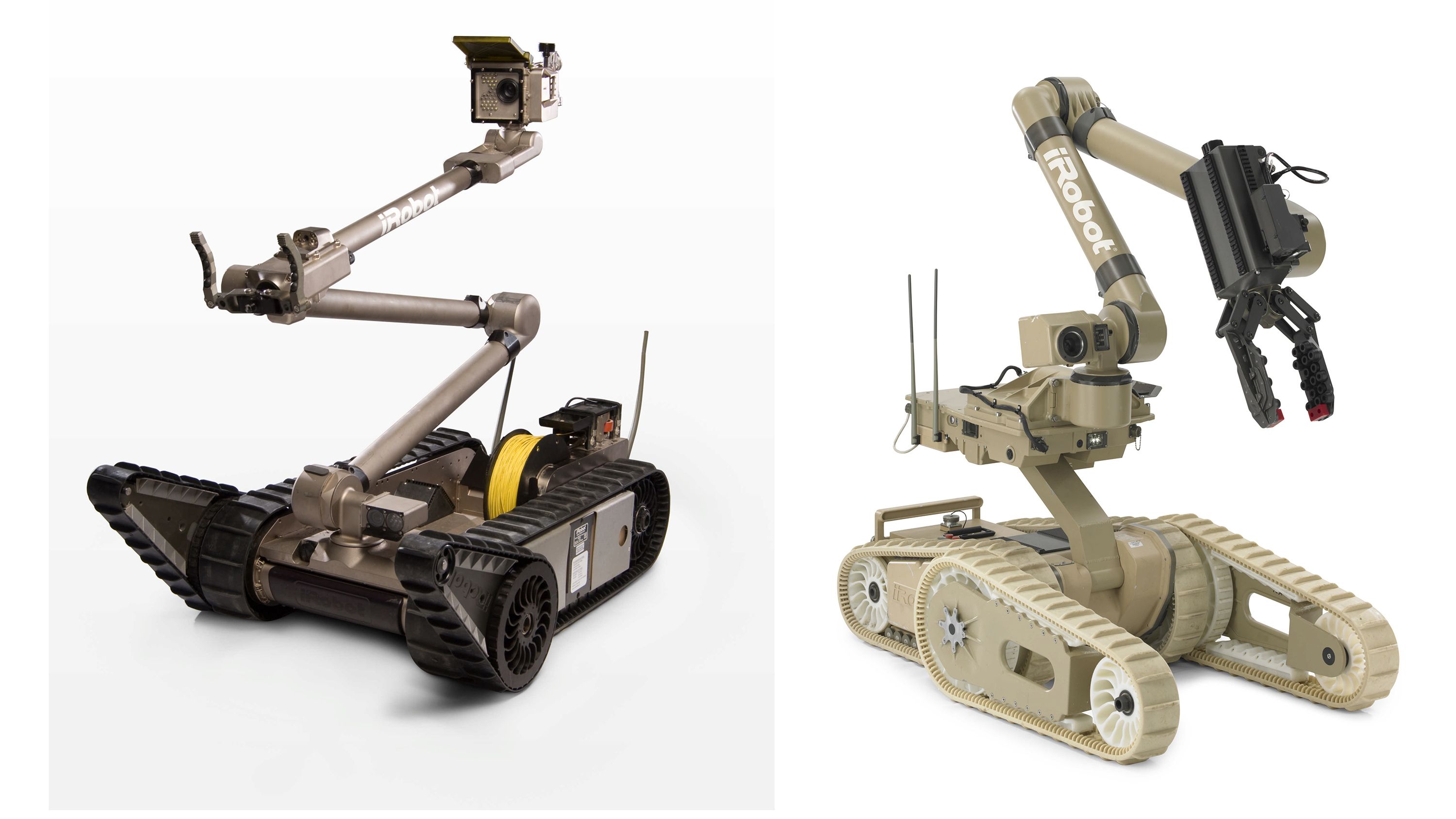In honor of Memorial Day, we’re taking a look at a selection of military hardware and vehicles, including some of the latest technology deployed on the modern frontlines. The iRobot Warrior is one great example. Designed as a multi-mission, unmanned ground vehicle, or UGV, the Warrior is a flexible utility robot capable of tackling dangerous situations without placing U.S. soldiers in direct danger. It’s produced by the Massachusetts-based iRobot Corporation, which just so happens to be the same company that makes the Roomba, that vacuum disc you see cats riding around on the Internet. But the Warrior isn’t a joke – this machine is a highly versatile battlefield asset capable of saving lives.
Developed in part thanks to a multi-million dollar contract with the Army Tank-Automotive Research, Development and Engineering Center, there are multiple iterations and configurations of the iRobot Warrior, including the 710 and 710 Kobra. Read on for the details on this modern slice of combat-ready tech.
Continue reading to learn more about the iRobot Warrior.
Purpose
The iRobot Warrior is like the Swiss army knife of UGV’s. Its load-out and configurations can be tweaked to suit a variety of different missions and objectives, including explosive ordinance disposal, reconnaissance, and surveillance. It can also be used for casualty extraction, and even welding.
Check out this video of the Warrior deploying its Anti-Personnel Obstacle Breaching System, or APOBS. It’s kind of like a giant explosive string that can take out mines or barbed wire, as well as any other obstructions that could slow troop movement.
With the appropriate armament, the Warrior can be used to bolster U.S. forces in a firefight, performing as a capable weapons platform.
The Warrior and its various iterations are also useful in civilian applications, such as in search and rescue operations. For example, in 2011, iRobot tested its platform by exploring the Fukushima Nuclear Reactor in Japan after a devastating tsunami swept the island nation following the Tohoku earthquake on March 11th.
Capability
The iRobot Warrior is controlled via something called an Operator Control Unit, which uses iRobot’s proprietary Aware 2 software to function, enabling remote operation up to 2,600 feet away. The actual robot is equipped with a variety of sensors to assist in operation, including obstacle avoidance sensors, multiple cameras, a compass, and GPS navigation. It’s also got an extendable arm that can reach as far as six feet, offering advanced articulation to perform a variety of tasks (opening a car door, for example).
Depending on the configuration, the Warrior can lift as much as 500 pounds, while also carrying more than 150 pounds across rough terrain. It can also climb up steps, as well as traverse slopes up to 45 degrees in angle. It’s even got enough torque to pull a car, if necessary, and can traverse water up to 45.7 meters (150 feet) deep. And, if time is of the essence, the Warrior is quick to deploy, taking just 60 seconds to get underway.
The Specs
iRobot Warrior Specs
|
Length: |
35 inches |
|
Height (stowed configuration): |
18 inches |
|
Width: |
30 inches |
|
Weight: |
285 pounds |
|
Extendable arm length: |
75 inches |
Motive Power
|
Power source: |
12 BB-2590/U batteries |
|
Operation time: |
between six and ten hours, depending on the task at hand |
|
Brake system: |
mechanical brakes |
|
Traction: |
dual-track drive system |
|
Top speed: |
9.3 mph |
Sensors and Software
|
Imaging: |
front and rear wide-angle cameras, white and infrared LEDs |
|
Communication: |
two-way audio system |
|
Control: |
Android-based controller and robot radio network |

